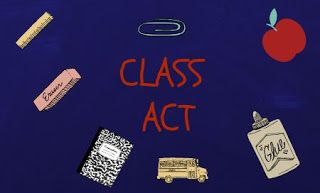As y’all know, I’m a Library Science student at University of North Texas. This semester I have the pleasure of taking an AWESOME class called Literature for Youth! One of the things we have to do is read some books from a list my Prof has provided us and then make up a blog and post reviews over what we’ve read. CLEARLY this is right up my alley! So, instead of making a completely different blog, every Saturday I’m going to start posting this new feature!
MODULE 10:
Historical Fiction
Released: March 22, 2011
Published by: Philomel Books
Source: Library
Book Summary: Lina is a 15 year old girl in Lithuania in 1941. She’s normal. She likes drawing and talking with her parents. Until one night her life isn’t so normal anymore. Soviet soldiers burst into her home and take her family away. Soon her family (her, her mother, and her little brother) are aplit away from her father and things continue to get worse from there. They’re forced into labor camps in terrible conditions. This is the story of Lina and her family as they face this terrible situation.
Reference: Sepetys, R. (2011). between shades of gray. New York, NY: Philomel Books. Retrieved October 31, 2015.
*MY IMPRESSIONS*
Historical fiction has never been my favorite genre, so when I saw we had to read one for a module, I wasn’t excited. But after reading the textbook and this book, I can see myself reading more of this genre.
Historical fiction provides readers with information about life, customs, and events in the past while taking readers into the lives of the characters. (Bucher, 2014) This is why it wasn’t my favorite genre. It always felt so “teachy.” But this book didn’t feel that way at all. It had the right balance of history and fiction. There wasn’t a time when I felt like I was reading my textbook, and I really learned a lot about the things that were happening at this time.
The best thing about this book is the fact that there was so much to learn. Of course I had heard about hitler and the Germans trying to over take Jewish people, but I hadn’t heard much about Stalin. This book taught me so much. Because of this I was ready to learn about this situation and see the situation through “the eyes of the characters.” (Bucher, 2014)
This book made me want to explore more of the historical fiction genre. It really made me think that there may be more that I missed and should give a small chance to.
Historical fiction provides readers with information about life, customs, and events in the past while taking readers into the lives of the characters. (Bucher, 2014) This is why it wasn’t my favorite genre. It always felt so “teachy.” But this book didn’t feel that way at all. It had the right balance of history and fiction. There wasn’t a time when I felt like I was reading my textbook, and I really learned a lot about the things that were happening at this time.
The best thing about this book is the fact that there was so much to learn. Of course I had heard about hitler and the Germans trying to over take Jewish people, but I hadn’t heard much about Stalin. This book taught me so much. Because of this I was ready to learn about this situation and see the situation through “the eyes of the characters.” (Bucher, 2014)
This book made me want to explore more of the historical fiction genre. It really made me think that there may be more that I missed and should give a small chance to.
Overall, I give this
Professionals are Saying…
KIRKUS REVIEW
This bitterly sad, fluidly written historical novel tackles a topic woefully underdiscussed in English-language children’s fiction: Joseph Stalin’s reign of terror. On June 14th, 1941, Soviet officers arrest 15-year-old Lina, her younger brother and her mother and deport them from Lithuania to Siberia. Their crammed-full boxcar is labeled, ludicrously, “Thieves and Prostitutes.” They work at a frigid gulag for eight months—hungry, filthy and brutalized by Soviet officers—before being taken to the Siberian Arctic and left without shelter. Lina doesn’t know the breadth of Stalin’s mass deportations of Baltic citizens, but she hears scraps of discussion about politics and World War II. Cold, starvation, exhaustion and disease (scurvy, dysentery, typhus) claim countless victims. Lina sketches urgently, passing her drawings along to other deportees, hoping they’ll reach Papa in a Soviet prison. Brief flashbacks, seamlessly interwoven, illuminate Lina’s sweet old life in Kaunas like flashes of light, eventually helping to reveal why the repressive, deadly regime targeted this family. Sepetys’ flowing prose gently carries readers through the crushing tragedy of this tale that needs telling. (maps, timeline, author’s note) (Historical fiction. 12 & up, adult)
Retrieved from: Kirkus(2011, January 8).BETWEEN SHADES OF GRAY [Between Shades of Gray, by Sepetys, R.]. Kirkus Reviews. Retrieved from: https://www.kirkusreviews.com/book-reviews/ruta-sepetys/between-shades-gray/
Library Uses:
I would use this as a Book Talk. I would talk about this book and then go into detail about the real situation on what this book is based on. This would move the students as well as the adults that were present. I would also see to it that there were props such as the message in a bottle at the end or even some of the drawings that someone else may
Book Image from: https://www.goodreads.com/book/show/7824322-between-shades-of-gray
Book Image from: https://www.goodreads.com/book/show/7824322-between-shades-of-gray




I've heard really good things about this book but I have been hesitant to read it because I'm just not a fan of books set during WWII. But I honestly didn't realize this was more focused on the Soviet Union. Now I really want to read it.
Cassi @ My Thoughts Literally